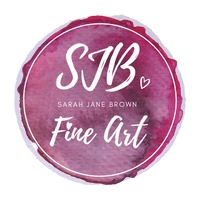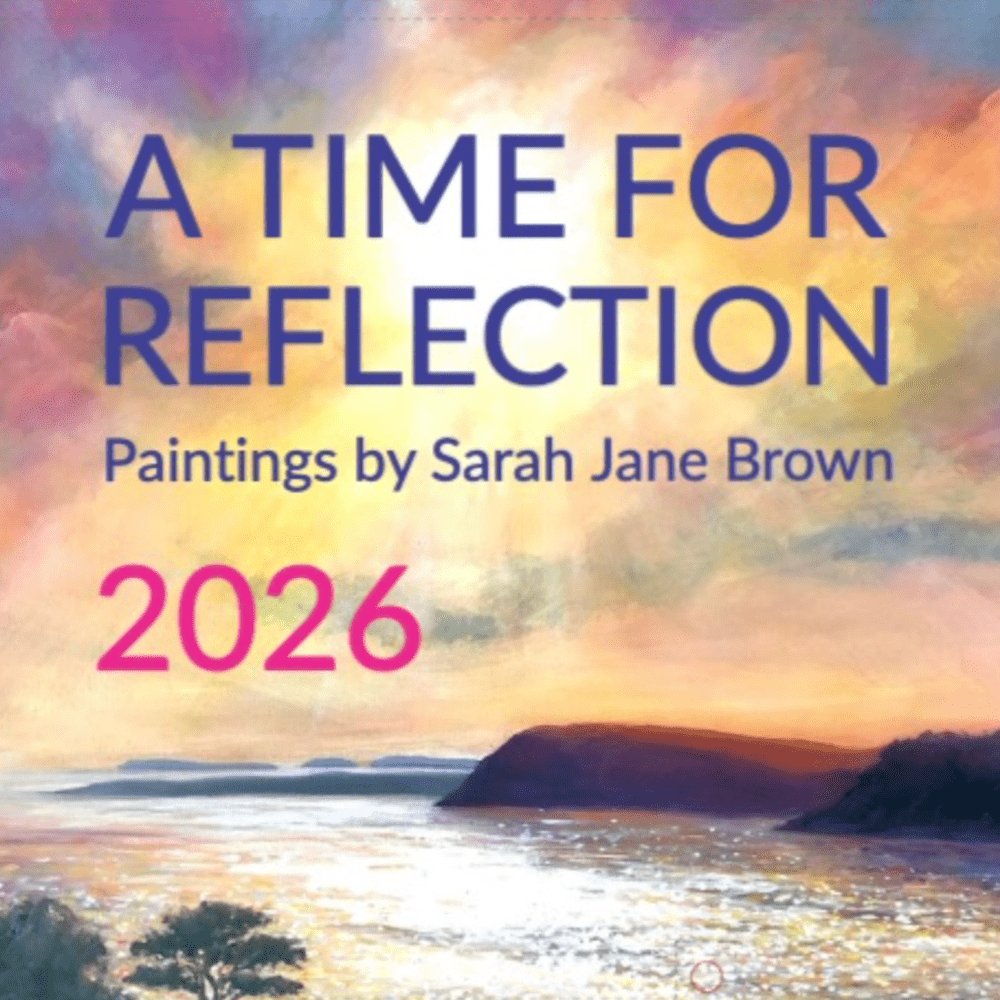When setting out to paint a beautiful beach scene, or any landscape for that matter, many artists find themselves staring at a blank white canvas, feeling a mix of excitement and intimidation. This pristine, untouched surface can be both a canvas of endless possibilities and a daunting starting point. However, there's a simple painters secret, an age old technique that can help ease the transition from blank canvas to breathtaking artwork: 'toning the ground'.

During a recent online painting masterclass I began by first 'toning the ground' before starting to paint the scene. I realised that some students may never have encountered this easy but important part of the painting process which is often overlooked precisely because it is so simple.
So in this blog post, I’ll explain the concept of toning the ground, its benefits, and how to apply it effectively. Whether you’re a seasoned artist or a beginner, this simple technique can kickstart your creative process and improve your paintings.
What Is Toning The Ground?
The 'ground' is the prepared surface or substrate that you're painting on; for example, a primed canvas or panel.
'Toning' the ground involves applying a thin, uniform-ish layer of colour over the entire surface before beginning the painting. This base colour sets the stage for the artwork, providing a mid-tone layer that can influence the overall mood and cohesion of the piece.
Why Use A Toned Ground?
1. Eases The Transition From Blank Canvas: A white canvas can be intimidating. Toning the ground takes away the starkness and helps reduce the pressure of starting. It’s a psychological trick as much as a practical one, giving artists a more inviting surface to work on. It gets you warmed up and ready to paint with more energy and decisiveness!
2. Mid-Value Base: Starting with a toned ground gives you a mid-tone base, which helps in balancing light and dark values throughout the painting. It’s like starting from the middle of the value scale, making it easier to judge the relative lightness or darkness of subsequent layers.
3. Harmonises The Painting: The toned ground subtly peeks through the layers of paint, unifying the colours and making the painting feel cohesive. It’s a great way to ensure, with minimal effort, that all parts of the artwork connect harmoniously.
4. Enhances Mood And Atmosphere: The choice of tone can set the mood for the painting. For instance, warm tones can create a sunny, inviting atmosphere, while cooler tones can evoke a more subdued, contemplative feeling.

Choosing The Right Tone
In the masterclass, we focused on painting a sunny beach scene—a seemingly simple, yet surprisingly tricky, subject. For this scene, I chose a magenta tone for several reasons:1. Avoiding Colour Mixing Issues: If I had used a yellow ochre or a similar colour, it could have mixed with the blue of the sky, resulting in an undesirable greenish effect. The magenta, being a cool red, blends nicely with the blue, subtly tinting it towards violet rather than green.
2. Warmth And Harmony: A magenta tone complements the warm colours often found in sandy beach scenes. It adds a subtle warmth to the painting, enhancing the overall feeling of a sunny, pleasant day.
3. Visual Interest: The magenta tone adds a slight vibrancy to the painting, making the colours more dynamic and engaging. It's a small touch that can have a big impact on the final piece.

How To Tone The Ground: Step-By-Step Guide
Materials Needed:
- Canvas
- Acrylic or oil paint (for the tone)
- Large Brush
- Palette
- Water (for acrylics) or a low odour solvent (for oils)
Step 1: Choose Your Colour
Select a colour that complements the scene you’re planning to paint. For our beach scene, magenta was chosen for its warmth and ability to harmonise with both the blues and yellows in the painting.Step 2: Mix The Paint
Mix a small amount of paint with water (for acrylics) or medium (for oils). The consistency should be thin, to ensure that the layer spreads easily, but not so wet that the paint runs.Step 3: Apply The Tone
Using a large brush, quickly apply the paint in broad, sweeping strokes. changing the direction of the strokes and injecting energy as you work. The goal is to create a fairly uniform, transparent layer over the whole surface. Don’t worry about perfection; the tone is meant to be subtle and will largely be covered by subsequent layers.

Step 4: Let It Dry
Allow the toned ground to dry before moving on to the next steps. This is important, especially if you’re using oil paints, as wet paint can mix unintentionally with the subsequent layers.Step 5: Begin Painting
With your canvas now toned, you can start painting with your chosen colours. You’ll find it easier to judge values and see how the colours interact with the toned base.
The Impact Of A Toned Ground On The Final Artwork
Toning the ground can have a subtle but profound impact on your artwork. It not only helps in setting the mood and atmosphere but also brings a sense of cohesion and harmony to the piece. In our masterclass, students found that the magenta tone added a soft warmth to the beach scene.
The subtle undertones peeking through can also add texture and interest, making the flat sand area in particular feel more vibrant and lively.

Tips For Toning The Ground
1. EXperiment With Different Colours: Don’t be afraid to experiment with different tones. Each colour can bring a unique feel to your artwork. For example, a burnt sienna tone can add a rich, earthy feel, while a pale blue tone can create a cool, calming atmosphere.2. Consider The Scene And Mood: Always think about the mood you want to convey. For warmer, more inviting scenes, consider using warm tones like yellows, reds, or oranges. For cooler, more serene scenes, blues, greens, or purples might be more appropriate.
3. Keep It Subtle: The tone is not meant to dominate the painting. It should be a subtle, supportive layer that enhances the overall composition.
4. Practice And Observe: Like any technique, toning the ground requires practice. Try it with different scenes and observe how it changes the final artwork. The more you practice, the better you'll understand the impact of different tones.
Enhance Your Artistic Journey With Toning
In conclusion, toning the ground is a simple yet powerful technique that can transform your paintings. By starting with a mid-tone base, you can ease the transition from blank canvas to completed artwork, enhance the mood and atmosphere, and bring a sense of harmony to your paintings. Whether you’re painting serene beach scenes or dramatic landscapes, this technique can help you achieve a more cohesive and impactful result.
To watch a demonstration of this technique (along with many other painting tips), check out the full Masterclass Video which is now available to purchase.
In this 90 minute lesson I demonstrate and discuss various aspects of landscape painting, offering valuable insights and practical tips to enhance your artistic journey. By implementing these techniques, including toning the ground, you can elevate your artwork and connect more deeply with your creative expression.

Happy painting!
If you'd like to get more tips like this, and stay up to date with new classes, join my studio insiders and you'll never miss a thing!









Leave a comment